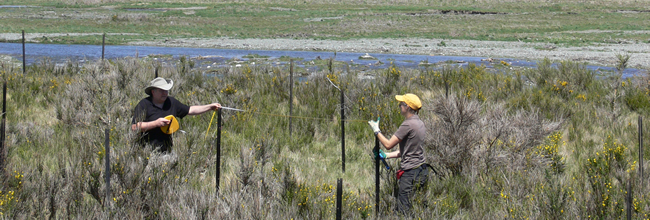Objectives / research strands

The Beating Environmental Weeds research is varied and extensive. It covers multiple environmental weed control techniques, including herbicides. We have highlighted below the research objectives that involve biological control.
Objective 1: Improved weed targeting
Improved weed prioritisation
- Creation of a National Weeds Distribution Database
- Applying an MDiG (Molecular Dispersal in GIS) spread model to a significant weed (Buddleja davidii)
Improved Targeting of weeds for biocontrol
- Quantitative analysis of weed biocontrol success
Objective 2: Improved environmental weed management
Improved tools
- Population modelling of biocontrol agents (heather beetle)
- Population modelling of weeds (Scotch broom)
- Evolution in weed biocontrol (Scotch broom seed size)
- Expanding the biocontrol tool box (potential use of bacteria and viruses)
- Microbial ecology on/inside plants (how these microbes may affect weeds and biocontrol agents)
- Impact of predation on biocontrol agents (impact of Argentine ants on boneseed leaf-roller)
- Impact of parasites/diseases on biocontrol agents (methodology for detection of microsporidia in heather beetle, and hygienic collection and rearing methods)
- Impact of biocontrol agents on non-target plants (St. John’s wort beetles)
Biodiversity and ecosystem benefits
- Optimising biodiversity outcomes from weed management (assessing biodiversity benefits from weed control)
- Ecosystem benefits of weed management (assessing long term effects of broom biocontrol on the ecosystem)
